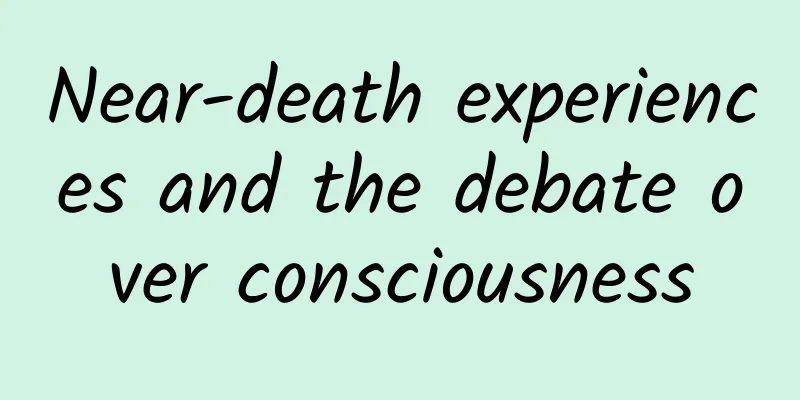Near-death experiences and the debate over consciousness

|
Leviathan Press: From a scientific point of view, there are two problems with the current research on near death experiences (NDE). First, most of the cases so far are retrospective rather than prospective studies, which means that the stories (memories) provided by the interviewees are not representative. For example, many NDE cases say that they have experienced ecstasy and calmness, while those who have experienced fear and despair may be more reluctant to talk about their experiences. Second, because it is a retrospective study, and the data of many interviewees are not collated until several years after the incident, the influence of memory bias cannot be ruled out. More importantly, retrospective studies prevent researchers from obtaining any valid evidence of the parties when they experienced NDE. But whether you believe it or question it, I believe that many people have already imagined many images that subvert their own cognition: If our brain is not the place where consciousness is stored, then where is consciousness? Although some NDE perception phenomena can be explained by physiology (for example, the gradually narrowing tunnel scene often mentioned in NDE is due to the decrease in blood flow in the periphery of the retina, which causes the peripheral areas of the visual field to lose vision first), it is still a mystery why the brain should regard the experience of struggling to maintain operation as positive and happy or the opposite panic and despair when losing blood and hypoxia. In addition, interested students can watch a 2015 documentary "Life Death & Reincarnation", which, in addition to NDE, also discusses memories and consciousness of past lives. The story told by the truck driver sounds a bit far-fetched. During his fourth coronary bypass surgery, he was under general anesthesia and his eyes were closed, but he claimed that he "woke up" and found himself looking down at his body while doctors performed the surgery. He described the scene in detail and even recalled that his surgeon had made a motion of waving his elbow in the air, as if imitating the flapping of a bird's wings. © New Scientist Later, when asked about the detail mentioned by the truck driver, his attending physician confirmed that he did indeed wave his elbow. The doctor explained that before the operation, in order to avoid contamination of his gloved hands, he used to fold his palms on his chest and use his elbows instead of fingers to make some movements. This movement is very rare and the patient should not have seen it at all, nor expected it. Bruce Greyson, MD, a professor of psychiatry at the University of Virginia, describes the truck driver's near-death experience (NDE) and many other similar experiences in his latest book, After. Professor Greyson spoke with the truck driver and his doctor separately to try to figure out why the man had such strange memories. However, his research makes this seemingly simple out-of-body awareness even more mysterious. After decades of studying NDEs, Grayson says most of his findings are difficult to square with our current understanding of consciousness and brain activity. "The common assumption is that the mind or consciousness is the brain," he says. In other words, consciousness and the brain are identical and unified. The two are inseparable. "There's a lot of evidence to support this," he adds. "When people are drunk or knocked out, it's often hard for them to think straight." The paradox, however, is that NDEs usually occur only when the brain is severely disabled, or even when the brain is monitored to be completely inactive. "NDEs seem to show us that under extreme circumstances, the mind and brain can be split," he said. "The mechanism is unknown, but the mind can continue to function when the brain seems to have stopped working." What we know about NDEs First, NDEs are incredibly common. Estimates vary, but most research finds that between 10 and 20 percent of people who have experienced near-death experiences, such as a catastrophic accident or cardiac arrest, say they have had one or more experiences similar to an NDE. In a 2014 study published in the journal Resuscitation, researchers found that one in 10 people who survived cardiac arrest woke up and said they had just experienced an NDE. In addition, 2% of survivors were able to recall what happened in the ward while doctors were resuscitating them, which the researchers could not explain. Not only are NDEs frequent, their characteristics are fairly regular. It is not uncommon to experience the outline of another body above one’s own, and to be able to recall in detail many things that happened around one in a state of absolute unconsciousness. Other notable features of NDEs include the awareness that one is dying or dying, feelings of extreme pleasure or ecstasy, the sense that time is slowing down, encounters with spirits or deceased relatives and friends, and lucid recall of past memories, like a vivid and exciting replay of one’s life story. Not all of these experiences occur only in NDEs. Some researchers have specifically compared near-death experiences to REM sleep disorder, which can also cause vivid hallucinations and out-of-body experiences. Others have focused on the apparent similarities between NDEs and experiences after taking psychedelic drugs, such as ketamine and dimethyltryptamine (DMT). As in NDEs, taking these drugs can also induce feelings of leaving or being outside the body, a sense that time is slowing down, and the perception of or communication with supernatural beings. Despite their bizarreness, some see these similar experiences as strong evidence that NDEs are simply a series of neurochemical changes or other routine brain activity. “Near-death experiences are a manifestation of abnormalities in normal brain function,” wrote the authors of a 2011 study in Trends in Cognitive Sciences. This may seem almost self-evident, but Grayson disputes this assertion. He thinks scientists who hold this view are sloppy in their research into the many well-documented cases of NDEs, in which people report so many details, all while they were unconscious. “People who have experienced NDEs and tried psychedelic drugs say that they are not the same sensations,” he adds. “You can’t get accurate information from out-of-body perceptions on drugs.” He believes that, far from establishing a strong link between NDEs and brain activity, research on psychedelic drugs has swerved it in the other direction: “Studies on psychedelics have consistently shown that more complex mystical experiences are associated with decreasing brain activity, not increasing brain activity, which is the opposite of what one would expect,” he explains. He also proposed a phenomenon called terminal lucidity, in which people with severe brain disease, such as advanced dementia, somehow briefly regain the ability to communicate, remember and think clearly shortly before dying. These patients' brains are sometimes severely damaged and damaged by neurological diseases. "There is no medical explanation for why they can recover lucidity," he said. All this evidence has led Grayson and others to consider alternative explanations for NDEs, including some that fundamentally challenge our traditional understanding of the relationship between the brain and the mind. If consciousness is not a product of the brain, then where does it come from? The brain is a "filter" of consciousness If NDEs aren’t “normal brain function gone awry,” then what are they? Grayson talked about a theory that the brain does not produce consciousness, but is more like a filter for conscious experience, blocking some information while allowing other information to pass smoothly. He mentioned that one possible explanation is that when people have NDEs, the brain's filtering ability may have "failed" for some reason, allowing the field of consciousness to expand. Some researchers are big fans of this filtering theory. When it comes to consciousness, “our brains are facilitators, not producers,” says Dr. Pim van Lommel, a Dutch cardiologist, NDE researcher, and author of Consciousness Beyond Life. Van Rommel said that contemporary neuroscience considers activity in the brain, especially the cerebral cortex, to be a “necessary condition” for consciousness. However, the study found that for people who experienced NDEs during cardiac arrest, consciousness seemed to be present and even more active, despite the lack of measurable brain activity data. All theories are controversial, to say the least. But if consciousness isn't a product of the brain, where does it come from? Grayson seems reluctant to give a definitive answer, saying, "I don't have an answer." Van Rommel, on the other hand, has a theory that he and other scholars call "non-local consciousness." © The Guardian Basically, it says that consciousness comes from an "information field" that exists outside of our minds and bodies, and even outside of time and space. In some of his published works, Rommel often compares the brain to a television. Just as a television can convert electromagnetic waves of information into pictures and sounds, perhaps the brain and body are just conduits for consciousness. He believes that this theory can explain many characteristics of NDEs that cannot be explained by current scientific understanding of the brain. Of course, many scientists have ridiculed Rommel's theory or dismissed it outright. Grayson hasn't. But he hasn't bought into the idea either. He says his work with NDEs has made him accept ambiguity and uncertainty, especially when it comes to the human mind. “I think we’re still in the very early stages of understanding the brain and how it functions,” he said. “In 100 years, I think people will look back at the theoretical paradigms we have today and laugh at how naive people were back then.” By Markham Heid Translated by Xixi Proofreading/Rabbit's Light Footsteps Original article/elemental.medium.com/what-near-death-experiences-teach-us-about-the-brain-c09a3430bcf9 This article is based on the Creative Commons License (BY-NC) and is published by Xixi on Leviathan The article only reflects the author's views and does not necessarily represent the position of Leviathan |
Recommend
Get pregnant quickly? Top 10 foods to warm the uterus and help pregnancy
How to get pregnant quickly? Young couples want a...
What does it mean when a cat chases its tail? What should I do if a cat bites its tail and bleeds?
Cats are very cute animals, whether they are kitt...
How big is the gestational sac at 6 weeks of pregnancy
Pregnancy is very important for women, and the bo...
Can Xiaoyao Pills remove freckles?
The main functions of Jiawei Xiaoyao Pills are to...
Why did my period stop on the fourth day and come back on the fifth day?
For humans, endocrine system is very important. I...
Lower abdominal pain after egg retrieval
Women's bodies secrete eggs every month, and ...
There are several reasons for cervical bleeding
Any abnormal uterine bleeding caused by disorders...
What items are included in the postpartum check-up?
Some mothers are first-time mothers, so there is ...
What is the maintenance of the uterus?
The female body structure is very complex, and th...
What are the New Year's goods generally prepared for the Spring Festival? A complete list of must-have New Year's goods for the Spring Festival
What to prepare for the Chinese New Year? Every y...
Is it OK to work until 9 months of pregnancy?
The traditional view is that you should rest at h...
What is the best-case date for freshly squeezed juice?
For today's young people, a plate of fruit ma...
What's the matter with the stinging and burning sensation below?
For female friends, if there is burning pain in t...
After vaccination, will antibodies in the body be produced as if infected with the virus?
Produced by: Science Popularization China Produce...









